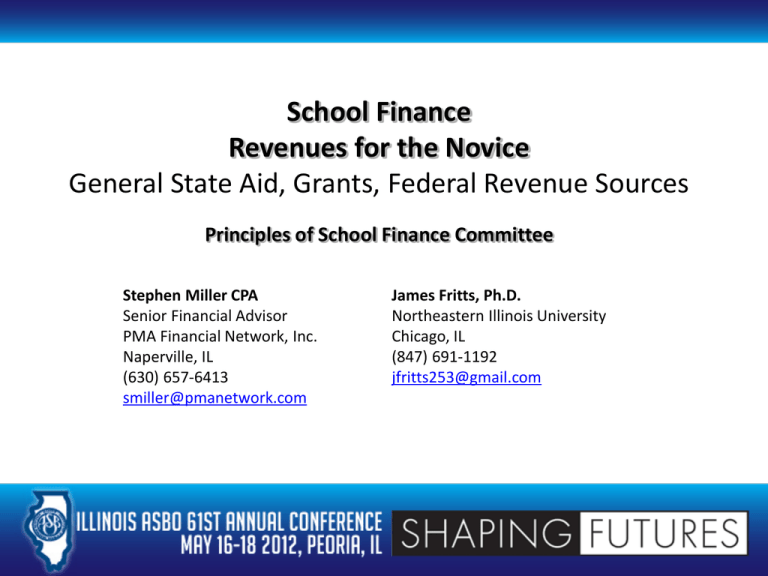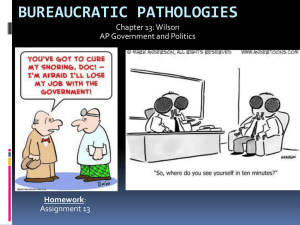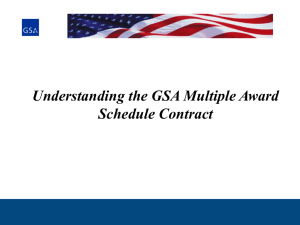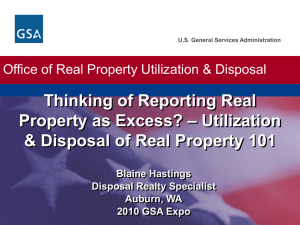School Finance Basic Revenues
advertisement

School Finance Revenues for the Novice General State Aid, Grants, Federal Revenue Sources Principles of School Finance Committee Stephen Miller CPA Senior Financial Advisor PMA Financial Network, Inc. Naperville, IL (630) 657-6413 smiller@pmanetwork.com James Fritts, Ph.D. Northeastern Illinois University Chicago, IL (847) 691-1192 jfritts253@gmail.com Presentation Topics • State revenues and their outlook – General State Aid-Jim – Categorical Grants-Steve • Federal grants and their outlook-Steve • Questions and discussion • This handout is designed for self-study after the Conference, using also the ISBE.net web resources that are listed. Questions are inevitable and expected. Judging a State’s School Funding System and Spending • States’ funding systems, including the local component, can be compared and evaluated on the extent to which they achieve – Equity – Adequacy • By these criteria, Illinois has ranked in the lowest tier among the states in recent years, especially in funding equity. • The ranking improved somewhat in 2009, but it reflects the drop on other states’ scores as the recession took hold. A Definition of “Equity” • Equity in school funding is achieved when there is a fair and just means of distributing resources among all districts in a state, taking into account the differing abilities of districts to raise money through property taxes. • If districts’ spending correlates highly with their property wealth, as in Illinois, equity is not present in that state’s funding system. • Absent equity, the quality of a student’s education depends on the “accident” of where the student resides. Equity is not a Recent Problem • “Differences in educational expenditures per pupil across school districts in a state remain a concern in most states.” Elwood Cubberly in School Funds and their Apportionment, Teachers College Press, 1905 Historical Background • Original schools were dependent on property tax. • As school populations increased and shifted towards urban areas, states created minimum foundation and equalizing state aid formulas as new district lines were drawn, thereby creating inequities of taxable resources. • State systems supplemented the property tax, but unequal and often highly varying amounts of property wealth per pupil (pwp) resulted. • Legal challenges to fiscal disparities began in the 1960’s in Illinois and continue to this day. Measuring Adequacy • Adequacy requires provision of sufficient fiscal resources to enable all schools to deploy educational strategies that can educate nearly all their students to the state’s proficiency standards. • Illinois has used data on the expenditures of a sample of lowspending districts with high achievement on State tests as a reference point to establish a foundation level in the General State Aid formula. • Current foundation funding levels of less than $6,000 are far below the $8,360 figure recommended by an Educational Funding Advisory Board in December 2010. • Adequacy can also be measured by comparing a state to the spending levels of other states. How Illinois Ranks Among the States • Each year, the publication Education Week grades the states on the extent to which they achieve funding equity and adequacy. • The rankings are based on revenue and expenditure data compiled by the National Center for Education Statistics (NCES). • Illinois ranked in the bottom 5 or 10 in funding equity and low average in adequacy in recent years. Slight improvement was shown for 2009. – High correlation (.19) of districts’ property wealth and spending level – Wide variations in property wealth and spending level that are not compensated by the state funding formula – An average FY 2009 (SY 2008-09) state spending level of $11,229, compared with the all-state average of $11, 665 – The small percentage (33%) of students residing in districts which spend at or above the U.S. average. The all-state average is 40.5%. • Percentage of school costs funded by State has declined over the years. Objective of General State Aid • General State Aid (GSA) provides unrestricted grants-in-aid to school districts in an equitable manner. • It is distributed in inverse proportion to local fiscal capacity, as measured by property tax wealth per pupil (pwp). • The formula for computing GSA is referred to the “foundation formula.” The concept of a foundation formula dates to work done by Strayer and Haig at Columbia University in the 1920’s. • The “foundation level” is the guaranteed minimum amount of money per student to be available to support the education of each student in the state. It includes both a local property tax component and the state component. Understanding the Components of GSA • General State Aid is the sum of several components in addition to the “foundation/equalizing” formula, although it is shown as a single appropriation in the ISBE budget. • Some provisions, including the “poverty supplement,” apply to all districts. Some apply only to districts subject to the tax cap, and one applies to tax-capped districts that have passed a referendum to increase the limiting rate. • Therefore, business managers and superintendents must understand the factors that apply to their own district and how they will be affected by trends in the tax base and rates, attendance and poverty, proposed formula changes and state and ISBE budget developments. Illinois Foundation System • The foundation formula assures $6,119 per student in shared state aid and local property tax revenue. • The State’s share is inversely proportional to a district’s available per pupil local resources, consisting of the tax base (GSAEAV) and Personal Property Replacement Tax Revenue. • GSA requires $4.448 billion in FY12 state budget--about 2/3 of the total ISBE grants from state funds. • Two formula variations (alternate method and flat grant) apply to districts at high end of wealth scale. These districts are “off the foundation formula” but other GSA components may apply. GSA Distribution General State Aid 2008-2009 $5,500 $5,000 Foundation Level = $5,959 l $4,500 General State Aid per Pupil $4,000 $3,500 Foundation $3,000 $2,500 $2,000 $1,500 $1,000 . Alternate Method Flat Grant $500 $0 .93 x FLEVEL 1.75 x FLEVEL Available Local Resources as Percentage of Foundation Level The graph illustrates the 2008-09 formula at a foundation level of $5,959 per pupil. The concept is also valid for the 2011-12 target figure of $6,119, but funded at only $5,953. A district slides down the GSA per pupil slope as its local wealth per pupil increases. But it levels off before it hits $-0-. Illustration of GSA Formula • The graph shows how GSA increases or decreases with a districts' ability to raise funds through property taxes. • GSA per pupil can range from $5,000 or more down to $218 for the richest districts. • University lab schools, alternative/safe schools and the Illinois Math and Science Academy receive the full foundation amount for each student, since they have no property taxing authority or tax base. • Even though the GSA grant line falls below $0, no district is excluded from GSA--yet. • Cutting out wealthier districts from GSA has been considered in recent years. The 3 GSA Formulas ISBE Statistics for FY 2012; numbers rounded • • • • The Foundation Formula generates GSA to 700 districts and programs with the lowest property wealth per pupil. – They are 75% of all districts with 71% of the students and receive 93% of the total GSA allocation. An “Alternate Method” formula generates about $300 to $425 per student to approximately 170 districts (18%), mostly in the Chicago area. – They have 24% of the students and receive 6% of the allocation. A “Flat Grant” of $218 per student goes to the approximately 70 wealthiest districts (7%), almost all in the Chicago suburbs. – They enroll 5% of the students and receive 1% of the allocation. Distribution of GSA by type of entity: – 387 unit districts (41%) receive 70% of the GSA allocation. – 101 (11%) high school districts receive 8% of the funds. – 377 (40%) elementary districts receive 21% of the funds. – 75 (8%) ROE programs and lab schools receive 1% of the funds. Calculating GSA • It will be helpful to follow the next few slides while looking at the Waukegan District 60 GSA calculation in your handouts. • Line numbers on the slides refer to the line numbers on the GSA entitlement report. • Later we will tell you how to get this report for any district in the state and to estimate GSA for future years. Computing General State Aid • Under the Foundation Formula: GSA = (FLEVEL of $6,119 - Available Local Resources (ALR) X Average Daily Attendance (ADA). Example: ($6,119-$4,000 ALR/Pupil)=$2,119 GSA per pupil. ($2,119 x 1000 Pupils in ADA)= GSA of $2,119,100. per pupil) • Under the Alternate Method: GSA =7% to 5% of FLEVEL ($428 to $306) x ADA Example: $350 per pupil x 1000 pupils= GSA of $350,000. • Under the Flat Grant: GSA = $218 x ADA. For 1,000 pupils that is $218,000. • Formula modifications may apply and will be illustrated later in the presentation. Determining the Applicable Formula • Finding the local ratio: – Multiply GSA EAV (Line G1) by the “calculation tax rate” for the type of district (Line G4) to get property tax component of ALR. • Elementary = .023; High School =.010; Unit =.030 • Add the Corporate Personal Property Replacement Tax (CPPRT) Revenue received during the previous year (Line G3). • Divide total ALR (Line G7) by the best 3-months’ Average Daily Attendance (Line G2) to find Available Local Resources (ALR) per pupil (Line G8). • Divide ALR per pupil by the Foundation Level ($6,119) to find the local ratio (Line G9). Determining the Claim Amount • It all depends on the local ratio. • If the local ratio is less than .93, the Foundation Formula applies. • If the local ratio is between .93 and 1.75, the “Alternate Method” applies. Per pupil state aid ranges from $306 to $428. The foundation level and equalization have minimal effect. • If the local ratio is greater than 1.75, the “Flat Grant” of $218 per pupil applies, and the foundation level and equalization formula have no effect. • The Waukegan GSA is calculated on the Foundation Formula in Part II. • The District’s Foundation Formula State Claim Amount is $45,706.638.66--before calculating the Poverty Grant (Part II, line 3). • That is equivalent to $3,226.99 per pupil (Line 4), or about 53% of the foundation amount of $6,119. A District’s Total GSA has Several Components • Foundation state aid computed on one of the three formula, depending on local wealth. • Poverty grants computed on the percentage of pupils classified as “poverty” by the Illinois Department of Health and Human Services. • For some tax-capped districts, an adjustment for the effect of the PTELL on the equalized assessed valuation used for general state aid purposes. • Adjustments for a few tax-capped districts where voters have approved an increase in the limiting tax rate. • Adjustments due to claim audits and other factors, including EAV changes, TIFs, property tax appeals. Supplemental GSA Poverty Grant • Districts receive additional funding for pupils categorized as “poverty pupils.” • These grants are paid as part of the GSA formula, but all districts are eligible regardless of which GSA formula applies to the district. – A district can be “property-rich” but have a large number of low income families residing within its boundaries. – Think, for example, of a district with a large railroad yard and truck terminal and a large number of low income housing units. The tax base is high, but so is the poverty level of the residents. Poverty Grant Formula • Low Income Concentration Level (LICL) (Line G6) – 3 Year Average of Illinois DHS count (Line G5) divided by ADA. – The count includes recipients of such state benefits as health insurance. – It is not the same as Federal Title I or Free/Reduced lunch counts. • 0% to 15% LICL districts receive a flat grant of $355 x Low Income Count. • > 15% LICL districts receive a variable per pupil grant that increases with the low income level up to $2,994. • In Waukegan, the 85.87% poverty concentration results in a $27,533,768 grant (Part II line 3) or $2,285 for each of its 12,050 poverty pupils. • After various audit adjustments and corrections (Part IV) the total Waukegan GSA claim is $73,278,800.48. The Costs of Higher Poverty • The Poverty Grant is a built-in budget bomb for the next few years. – The poverty counts are a 3-year rolling average and poverty rates are still increasing. – From 2003-2012 poverty grants increased from $388 million to $1.567 billion, requiring 35% of the total GSA appropriation – The grants are not itemized in the ISBE budget. • Higher counts do not per se increase the total GSA appropriation by the General Assembly. Rather, they draw a larger share of the total GSA appropriation away from foundation aid. “Double Whammy”Adjustments are of Two Types and Apply to Tax-Capped Districts • It reduces the EAV used for GSA calculation and thereby increase GSA. The “Whammies” it seeks to correct are an increase in EAV that cannot be fully accessed due to the tax cap, but would nevertheless work to reduce GSA. • It provides for an alternate lower calculation of GSAEAV and is found on the entitlement worksheet prepared by ISBE. (Lines AA-FF). • It benefits 364 of 460 tax-capped districts. • The costs of the Double Whammy have increased from $46 million to $629 million over 12 years, drawing on the total GSA appropriation that also “supplies” foundation/equalization aid and poverty grants. • As with the poverty grant, they are not itemized in the state budget. and the diversion of funds from the foundation component of GSA to the PTELL adjustments does not per se increase the total GSA appropriation. GSA and Adequacy • The current formula level of $6,119 is only 54.6% of the $11,197 average expenditure of Illinois school districts in 2009 and even less than the average 2012 expenditures, which are not yet available. • There has been no increase in the foundation level for 3 years due to State’s fiscal crisis. • The low overall state share contributes to Illinois poor rankings among states in school funding. • Significant increases will require billions of new state revenue and new revenue sources. Managing and Projecting GSA • ISBE’s website provides information on the GSA variables, including GSAEAV, CPPRTR, Poverty Counts and more. – – – – – On-Line data entry & forms downloading General State Aid Claim Forms (54-33A) General State Aid Worksheet (54-33) General State Aid Excel Calculator and simulator Student Attendance Frequently Asked Questions (FAQ) • Attendance management and record-keeping compliance are the points of control in managing GSA. • Use the Excel calculator to simulate changes in foundation levels, GSAEAV, attendance etc. for budgeting GSA. Projected General State Aid Worksheet for the 2010-2011 Claim Payable in 2011-2012 District Foundation Level = $6,119.00 Yel low cell s for tax capped di stricts onl y DATA SECTION 1A. 2009 Adjusted Real EAV 2008-2009 ADA 1B. GSA EAV used f or FY 2011 2009-2010 ADA 1C. Current Y ear PTABs $0 2010-2011 ADA $0 Three-Y ear Av erage ADA 0.00 2. 0.00 1D. Alternativ e Exemption (7% Cap) 1. GSA EAV used f or FY 2012 2008 DHS Low Income Count ADA Used f or GSA 2009 DHS Low Income Count 2010 DHS Low Income Count 5. AVG DHS Low Income Count 0.00 6. District Low Income Concentrati on 3. 2009 CPPRT (Rec'd in 2010) 4. Calculation Rate 0.0300 (Unit=.0300, Elementary=.0230, High School=.0105) 7. Available Local Resources $0.00 T ax Capped Distri cts Only 8. Available Local Resources per ADA 2009 Original EAV 9. Percentage of Foundation Level 2009 Limiting Rate 2008 Original EAV 1997-98 Hold Harmless Base 2008 OTR EAV Used in GSA Calculations Real EAV 2009 Extension Limitation Ratio Not Appl icable SECTION A - FOUNDATION FORMULA 10. Foundation Level X ADA 11. Available Local Resources 12. FOUNDAT ION FORMULA AMOUNT $0.00 $0.00 $0.00 SECTION B - ALTERNATE FORMULA 13. 15. 17. 18. Li ne 9 mi nus .93 Li ne 14 ti mes .02 Am ount per ADA ALT ERNAT E FORM ULA AM OUNT 0.0000 0.0000 $0.00 $0.00 14. Li ne 13 divi ded by .82 16. .07 m inus Line 15 0.0000 0.0000 SECTION C - FLAT GRANT FORMULA 19. FLAT GRANT FORM ULA AMOUNT ($218 x ADA) $0.00 SECTION D - POVERTY GRANT If Line 6 < .15 then Else Poverty Grant = $355 x Li ne5 Poverty Grant = (294.25 + (2700 x (Li ne 6 x Line 6))) x Line 5 Poverty Hold Harmless has expired, per statute 20. Am ount per Low Incom e Count PLEASE SEE NOTE BELOW Hol d Harmless Base 21. FY 12 GROSS POVERTY ENTITLEMENT 22. GROSS FORMULA ENTITLEMENT $0.00 23. GROSS GENERAL STATE AID (Gross GSA Entitlem ent + Poverty) NOTE: GSA HOLD HARMLESS WAS PAID AT LESS THAN 50% IN FY 2010 THERE WAS NO FUNDING FOR GSA HOLD HARMLESS IN FY 2011 Hol d Harmless-100% GSA HH - 50% GSA HH - 25% $0.00 #VALUE! #VALUE! Researching a District’s GSA • Go to www.isbe.net. • Click on “General State Aid Program” on the site map. • Click on “GSA Inquiry” in the box. • Click on “FY12 reports.” Use the pull down menu to find your district and click on it. • Click on “Calculation of entitlement.” • Print the report; it looks like the Waukegan report in your packet. Effect of $1 million EAV Change on Foundation Formula GSA (if other factors remain the same) • • • • Unit Districts lose or gain $30,000 in GSA. Elementary Districts lose or gain $23,000 in GSA. High School Districts lose or gain $10,500 in GSA. If a district’s EAV is changing, it may gain or lose in local property taxes more than it gained or lost in GSA, if the district’s tax rate is higher than the calculation rate in the GSA formula. • Important facts to remember when projecting future GSA amounts. – EAV is not used for GSA until 2 years after the tax extension: the 2009 EAV used in 2010 tax extension was used for FY12 GSA. – CPPRT revenue is used for GSA calculation 2 years after the year it is received-e.g. revenue received in 2010 was used for FY 2012 GSA. CPPRT revenue changes are an upward or downward force on GSA calculations (if the district is a foundation or alternate method district.) Some Common Audit Problems of ADA • Including non-claimable orphanage students (separate funding source) • Including non-claimable tuition paying students • Including non-resident students • Claiming ADA on Parent-Teacher Conference day • Incorrect calculation of days in session • Discrepancies with classroom counts/office records • Math errors in summarizing attendance data and entering it in IWAS system • Train your attendance record personnel in recording procedures and related regulations. Outlook for FY13 GSA (Presenter’s Prediction as of 5/8/12) • Foundation level: flatline or reduction. – Governor’s FY13 budget would support $5,823 actual funding level, compared to $5,953 this year. – Necessary funding to maintain or increase current levels will draw on categorical grants. • All districts will continue to receive GSA. • Possible reduction in PTELL “double whammy” adjustment. • No change in poverty formula; but higher poverty counts will require more money. Other State Revenues – Categoricals and Grants • Originated as incentives that were later mandated • Funding varies year to year – Depends on numbers of children and on health of the State economy – Appropriations dependent on Legislature – Grants are often are prorated Mandated Categoricals • • • • Special Education Orphanage Transportation PA 96-1441 – made certain initiatives not mandatory if there is not funding to support them FY2012 State Education Budget General State Aid Mandated Categoricals Special Education Transportation Orphanage Lunch/Breakfast Grants Bilingual Early Childhood All Others Total $ 4,448,104,500 $ $ $ $ 1,099,719,400 642,608,900 13,000,000 26,300,000 $ $ $ $ 63,381,200 325,123,500 109,895,200 6,728,132,700 FY2012 MCATs Budget Special Education Personnel Funding for Children… Orphanage Private Tuition Summer School Transportation Special Education Regular/Vocational Total $ $ $ $ $ 465,700,000 343,375,700 101,700,000 177,743,700 11,200,000 $ $ $ 436,800,000 205,808,900 1,742,328,300 Special Education • Personnel reimbursement – Pays for a portion of teachers ($9,000 per FTE) and staff ($3,500) – Amounts were increased in FY08 for the first time • A portion of costs for home and hospital tutoring • A portion of private school tuition and room and board for outside placements • Funding for Children Requiring Special Education Services – Formerly known as Extraordinary – Per student reimbursement • Orphanage funding Transportation Reimbursement • Regular Transportation – Reimbursement for students transported over 1.5 miles or less than 1.5 miles with hazard approval – Minimal Amount of Expenditures Reimbursed • Special Education Transportation – Reimbursed at a higher rate • • • • Vocational Transportation Field Trips Annual claim submitted in August for prior year Available to districts that run their own transportation and those that use an outside contractor Outlook for FY13 Categoricals & Grants • Continued delays in payments • Further Regular Transportation cuts, maintenance of Special Education Transportation funding. Potential modification of reimbursement formulas. • No restoration of programs eliminated in FY2011: ADA Safety Block Grant, Reading Improvement Block Grant • Further debate over ROE funding Federal Revenues • Perceived National Need – To promote cause of education – To broaden scope of education – To educate individuals for whom the federal government accepts responsibility – To improve quality of education – To compensate for deficiencies in tax base • Application Based, Need Based and Reimbursement Based – Title Grants – IDEA Special Education - not all districts receive this directly, it may go to your Special Education Co-Op – Free & Reduced Lunch – Medicaid FY2012 Federal Revenue (flow-through from ISBE) Federal Grants Title I NCLB Title I ARRA Title II - Teacher Quality Title III LIPLEPs Title IV-Drug Free Title IV- 21st Century School Lunch/Breakfast IDEA, Part B IDEA ARRA IDEA, Preschool Vocational Education (CTE) Others Total Federal $ $ $ $ $ $ $ $ $ $ $ $ $ 750,000,000 381,125,200 157,000,000 40,000,000 15,000,000 60,500,000 725,000,000 650,000,000 354,535,900 25,000,000 60,000,000 184,974,200 3,403,135,300 Outlook for FY13 Federal Programs • Loss of remaining ARRA funds • Stable funding for traditional programs (Title, IDEA) • Any new funds will come with additional strings (Race-to-the-Top; reform)








